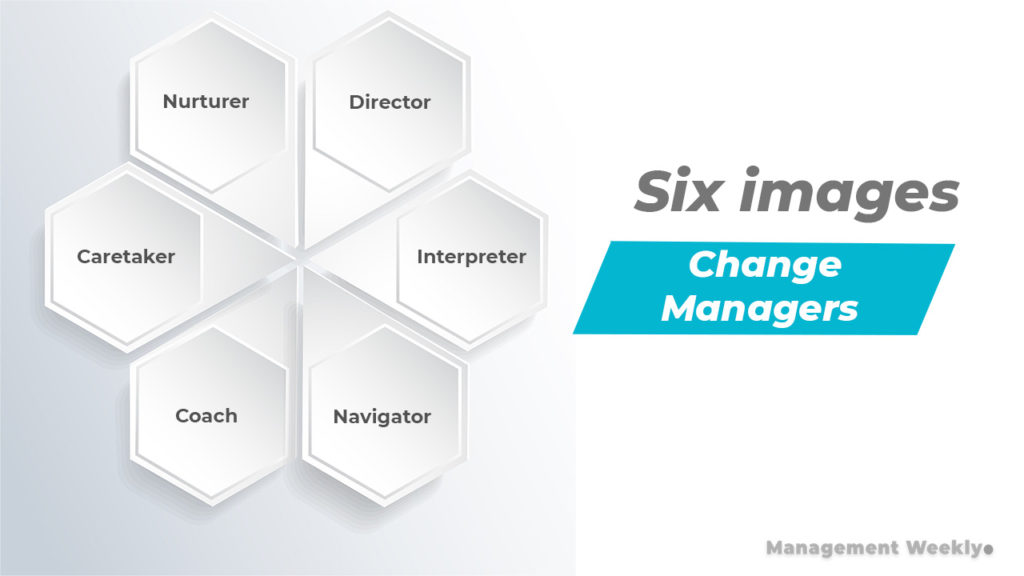The success of organizational change hinges heavily on leadership. What are the roles that the leaders must play to make it successful? Change management can be best understood as a set of six images of change managers. This framework helps us take a fresh look at change leadership. Therefore, it also answers how leaders can manage change.
Contents
The need for organizational change
There are two opposing schools of thought about the drivers of change. The first school of thought posits that the need for change comes from within an organization. The second school of thought positions changes as a response to the external environment.
Why do we need organizational change?
- Firms operate in a dynamic environment. If you do not change, you will lag behind your competitors.
- New technologies make changes necessary. The digitalization of organizations has an important cause of change in the past two decades.
- Mergers and acquisitions. Firms need sea change after M&A.
Palmer’s Simplified Understanding of Organizational Change
Palmer and Dunford (2008) have argued that there is a ‘sheer sprawl’ of literature on change. This untidy spread of literature makes it difficult to understand and practice change management. They identified two broad approaches to managing change. We can visualize change management as controlling the change. We can also think of management as shaping the change. Further, these broad approaches can be classified under the type of outcomes they produce:
- Intended
- Unintended
- Partially intended
Three Types of Outcomes
If the organization achieves the objectives of the change, then it is called intended change. Most of the discussion around change management has been under this assumption. Secondly, we may get unexpected outcomes. These outcomes may be favorable or unfavorable to the organization. Firms need to adapt to change on course and maneuver these unintended and partially intended outcomes. One of the early proponents of the adaptive, emergent strategy was Henry Mintzberg.
Therefore, we can now categorize the different approaches taken by change managers as a permutation of these possibilities. This gives us a total of six images of change managers. These six images are summarized in the table below:
| Type of management | Outcome | Images of change managers |
|---|---|---|
| Controlling | Intended | Directing |
| Unintended | Caretaking | |
| Partially intended | Navigating | |
| Shaping | Intended | Coaching |
| Unintended | Nurturing | |
| Partially intended | Interpreting |
Palmers Six Images of Change Management

Change management is one of the most challenging managerial roles. The managers need to don different hats during the course of change management. Palmers et al, studied this process and proposed that there is a total of six different roles of a change manager.
- Director – The change manager is responsible for ‘direct’ organizational resources towards the new paradigm. In simpler words, a change manager has to orient people towards the organizational goals. They also have to motivate people to imbibe the rationale for the changes.
- Navigator – A navigator as the name suggests, maneuvers the project. It is just like ships and planes cannot be run on auto-pilot all the time (at least as of now). The ships need constant input from the captain to navigate different types of situations. Similarly, a change manager ensures that the objectives are met regardless of the changing dynamics inside and outside the firm.
- Caretaker – There are a lot of internal and external factors which cannot be controlled. The concept of caretaker comes from the fact that not all variables are under the control of managers. Therefore, the caretaker is also one of the images of change managers. As a caretaker, the managers ensure that the change process follows its course in the face of changing environment.
- Coach – The coach works with the team members. Changes are daunting processes. The job of a coach is to make this less daunting. They sit down and discuss the perspectives of their employees and provide valuable feedback and suggestion.
- Interpreter – We have discussed that it is important to align individuals to the organizational goals. It may require interpretation of the objectives in form of tasks. Further, the teams and individuals need to set goals for themselves. The change manager acting as an interpreter legitimizes the objectives through a set of goals.
- Nurturer – Finally, we come to the sixth of the images of change managers. Think of nurturer as the gardener who shapes the plants. Plants need to be watered, fertilized, cleaned, and pruned. Similarly, organizations also require constant nurturing to shape them according to the vision.
What do Change Managers do?
Firstly, there may or may not be a designated ‘change manager’ in an organization. Change manager could be just a responsibility of a manager. However, there are organizations that have dedicated change managers. These managers look at planning, strategizing, and implementing the change process. This process involves the following activities:
- Brainstorming ideas
- Development of change blueprint
- Delegation of responsibilities
- Implementation of change process
- Managing and directing change
- Financial estimation and analysis
- Communicate to the lower and upper levels
- Resolving conflicts
